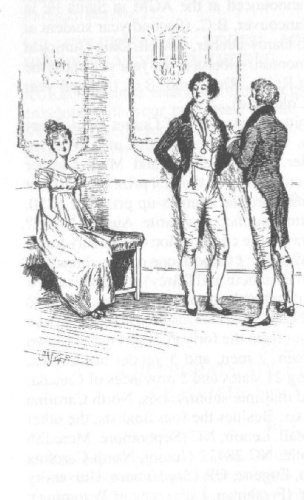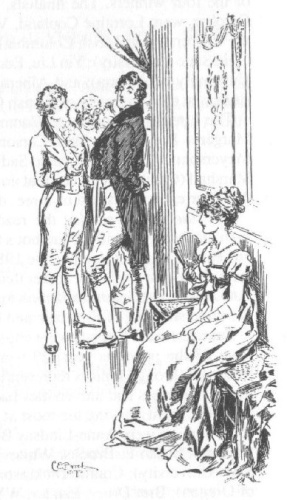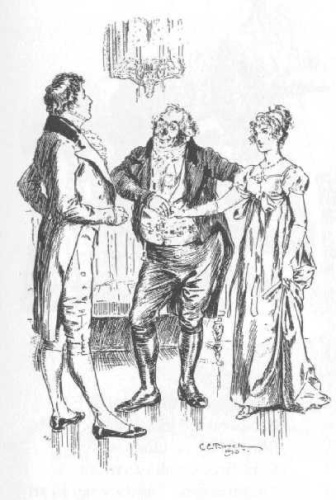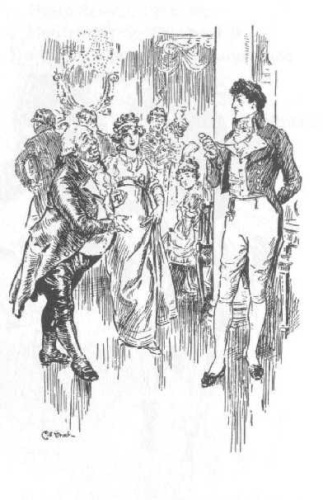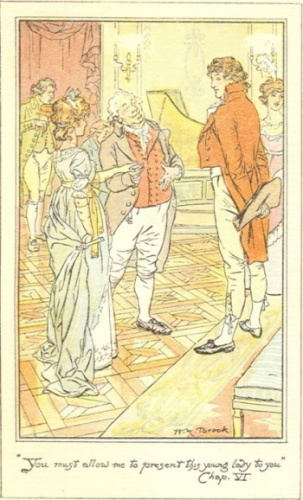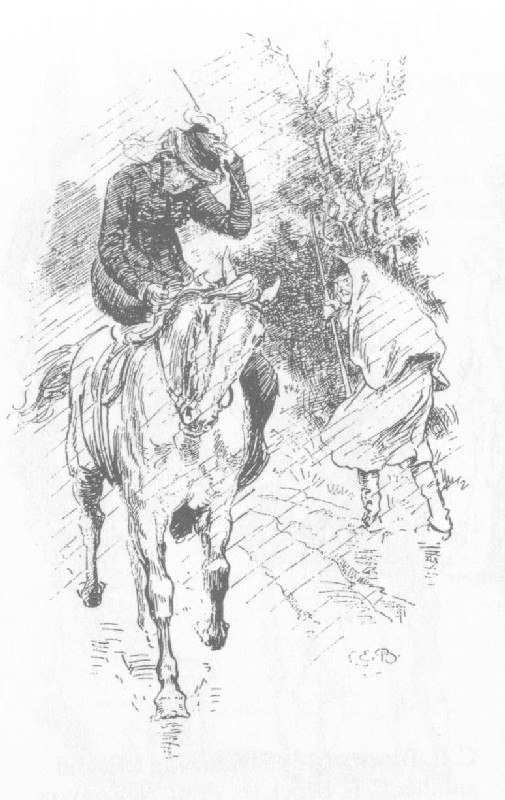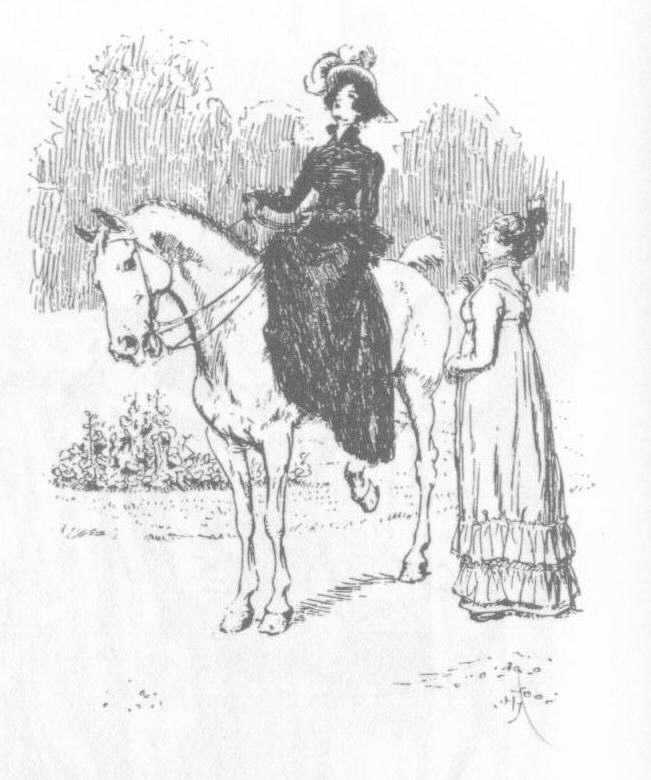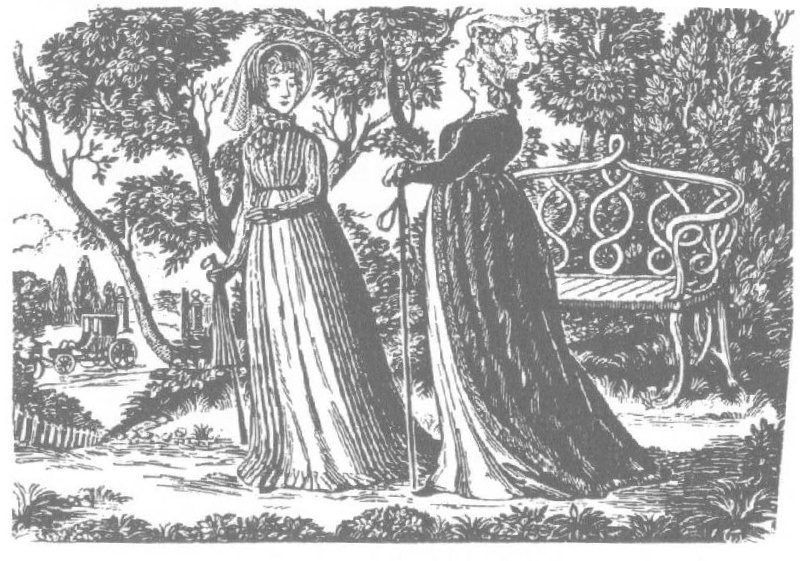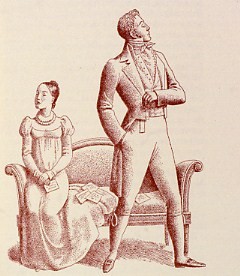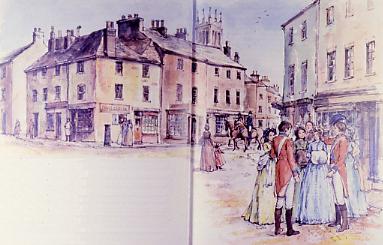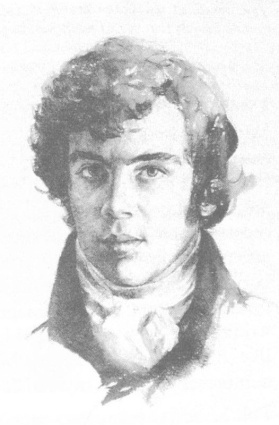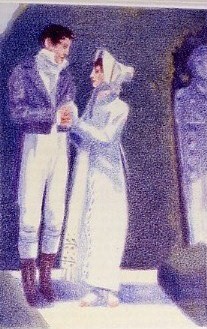|
Persuasions #11, 1989 Pages 22-27 Illustrating
Jane Austen KEIKO PARKER These illustrations and comments are excerpted from a slide lecture given by Keiko Parker at Vancouver and Santa Fe.
Hugh
Thomson, 1894, on the above left, and Charles E. Brock, 1895, MacMillan, on the
above right.
Since these illustrations came out only a year apart, comparison is
inevitable. Thomson’s Elizabeth
looks too juvenile. C.E. Brock’s
Elizabeth is just right – mature enough to lock horns with Mr Darcy.
Joan Hassall’s black and
white woodcut prints came out in an edition by the Folio Society between 1957
and 1962.
Having come from the land of Hiroshige and other famous woodcut print
artists, I admire the careful detail Joan Hassall put into the bench, the leaves
on the trees, the folds of the dresses, and Lady Catherine’s coach in the
distance.
Lynette
Hemmant, 1980,
World’s Works Ltd., Surrey (SBN 437-24575-6).
I set down these publication details since this book – among all the
recent books – gained the most attention from both the Vancouver and Santa Fe
audiences.
Regarding this book I stated, “Jane Austen can be read on several
different levels, and there is nothing wrong with a teenager reading PP
strictly as a love story.
I for one, would have been delighted if I, as a young girl, were
presented with a book like this.”
This comment seemed to strike a sympathetic chord with quite a number of
people in my audience. This book has many
two-page spreads in beautiful colours as well as black-and-white pictures.
The artist allows us to see a wider vista than any others I have seen.
Here the Bennet girls with Mr. Collins meet Denny on their way to their
Aunt Phillips’ and get introduced to Wickham.
Note Darcy and Bingley on horseback approaching from the distance.
† The color images have replaced the original black and white images for the on-line edition of this essay, courtesy of Keiko Parker. – C. Moss, JASNA Web Site Manager BIBLIOGRAPHY Grey, J. David, ed.
The Jane
Austen Companion,
MacMillan, New York, 1986, contains an article by Joan Hassall (different from
the below-mentioned), and another by Maggie Cohn. Hassall, Joan.
“On Illustrating Jane Austen’s Works,” an article in the 1973
Annual Report of the Jane Austen Society (England). Kelly,
C.M.
The Brocks,
A Family of
Cambridge Artists
and Illustrators, Charles
Skilton, Ltd., London, 1975.
Spielmann,
M.H. and Walter Jerrold.
HughThomson, His Art
His Letters
His Humour and His Charm,
A & C Black, London, 1931. Warner, Sylvia Townsend. Jane Austen, pub. for the British Council and the National Book League, by Longmans, Green & Co., 1961, contains a select bibliography. |

